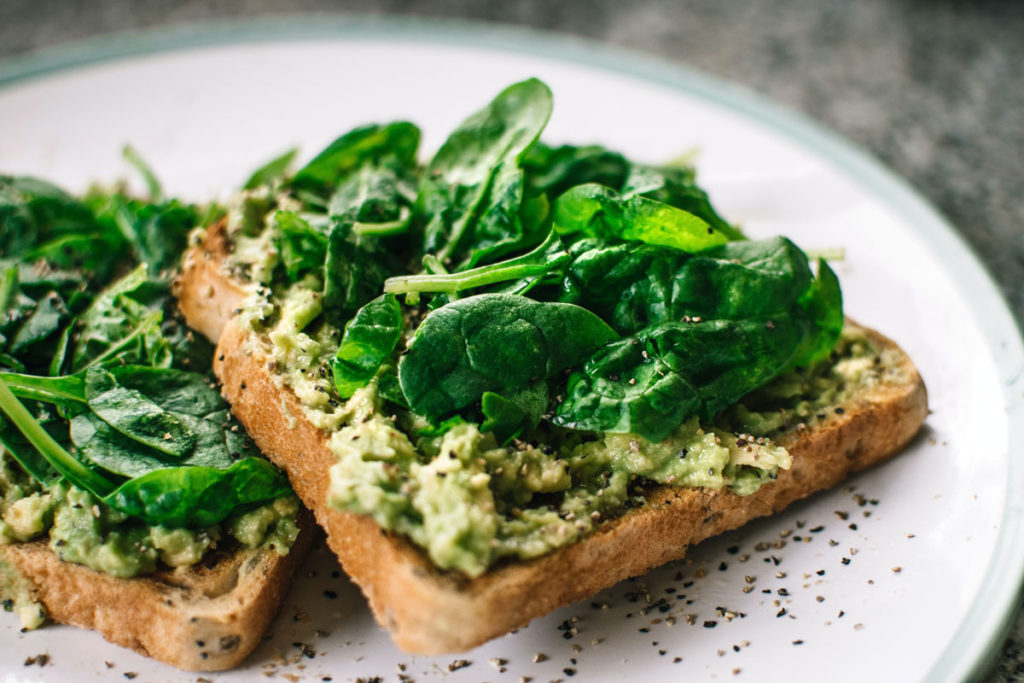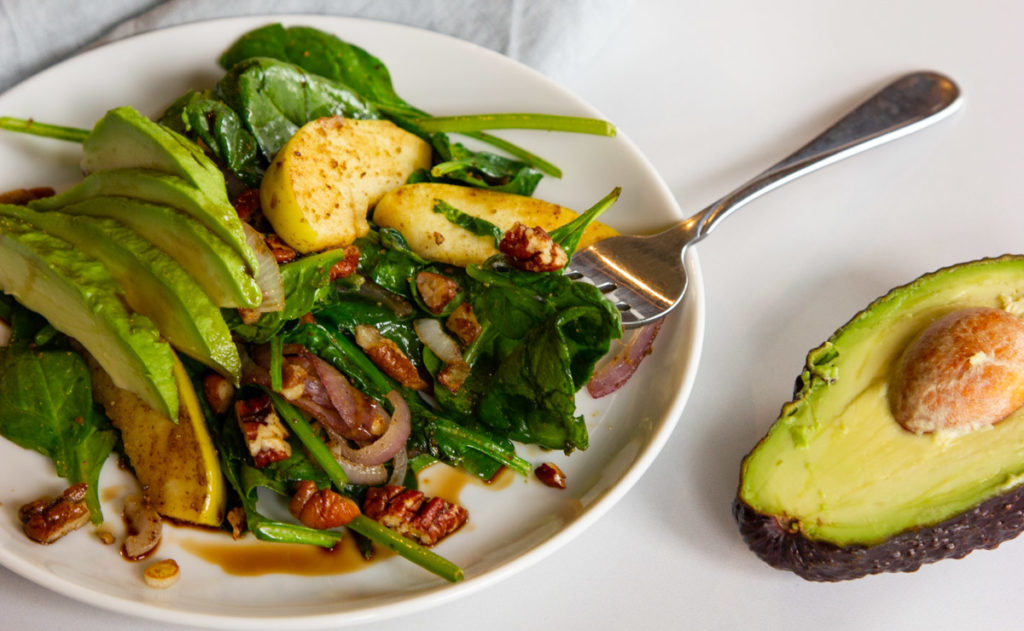This post may contain affiliate links. Please see our disclosure for more information.
Spinach is both a superfood and a nutritional paradox. It’s one of the most popular leafy greens—high in vitamins K, A, E, and C and minerals iron, calcium, and magnesium—and yet it can be very difficult to digest, particularly if consumed raw.
Spinach has both a heating and drying effect in the body, which is rare in the food world, so it’s important to keep that in mind.

To mitigate the dryness, you want to include sufficient healthy fats in a spinach salad to add hydration and balance it out.
Uncooked spinach contains oxalic acid, which is counter-indicated for kidney stones, which is commonly composed of calcium oxalate. This acid can also be irritating for folks with sensitive digestive systems.
Don’t be alarmed though. Spinach is very good for you. With raw spinach, enjoy it in smaller portions. You need only be concerned if you are eating raw spinach daily, or perhaps adding spinach to a smoothie daily.
There are many healthy ways to enjoy spinach. Let’s look at some of the top health benefits from an Ayurvedic perspective.
Taste and texture
Spinach is rich in astringent taste, which is what gives spinach its drying medicinal effect.
You might be interested to know that spinach is also bitter, sour, and salty. Some sources also say spinach is pungent.
That’s five taste profiles, and a very complex flavor!
The complexity is a reflection of its superfood and powerhouse nutritional content. You are literally tasting the vitamins and minerals in the spinach that the plant has obtained from the sun and the soil.
What I love about spinach is how luscious and soft it is when cooked. This is evidence of insoluble fiber, which has a soft and soothing quality in the digestive tract.

Antioxidant and anti-inflammatory
The green succulent is known for its antioxidant lutein, which is associated with protection against age-related eye diseases such as macular degeneration and cataracts.
Any antioxidant-rich food is going to be anti-inflammatory, however, getting back to that paradox of health benefits …
How to cook with spinach
Spinach has an acidifying effect on the body, and it is also stimulating due to its rich flavor profile and combination of hot, light, and dry qualities.
In Ayurveda, stimulation is associated with strong substances as well as heat.
Lightness can be stimulating because it is the opposite of grounded. Think of what it feels like to be light-headed.
Dryness is stimulating because it is contracting, which reduces circulation. This can make you feel cold and constricted, which then disturbs and stimulates the nervous system.
So the big question is: how can we maximize the nutritional benefits of spinach, while mitigating any negative effects?
It’s easier to balance out any potentially negative impact of spinach in a cooked dish.
Cooking spinach neutralizes the oxalic acid, and combining spinach with other ingredients easily balances out the negative effects of the spinach itself by adding heavier foods and healthy fats to reduce unwanted nervous system stimulation.
How to make a healthy spinach salad
In a salad, the principles are the same. We want to bring about balance with heavier foods and healthy fats for hydration.
Let’s take a typical spinach salad I’ve made in the past.
I tend to include a good portion of mozzarella cheese with raw spinach, and sometimes mushrooms, then drizzle with olive oil and balsamic vinegar.
Cheese, mushrooms, and olive oil are all heavy, moistening, and cooling, which balances the hot, light, and dry qualities of the spinach itself. The vinegar is warming, but provides digestive support for the fats.
I also have a wonderfully balanced warm spinach salad on Buttered Veg, my sister site, and a vegetarian food blog.

This salad combines the spices of fennel, cardamom, and black pepper, sautéed in ghee with red onions, apples, pecans, and spinach itself.
Then it’s garnished with fresh avocado and balsamic vinegar for natural sweetness.
Try this balanced recipe and fully assimilate the nutritional benefits of spinach.

